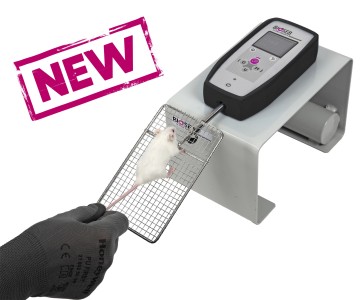Authors
Y Liang, D Zhao, R Wang et al
Lab
The First Affiliated Hospital of China Medical University, Liaoning, China;
Journal
Thyroid
Abstract
Background In humans, Resistance to Thyroid Hormone (RTH) caused by mutations in the thyroid hormone receptor alpha (THRA) gene, RTHalpha, manifests as tissue-specific hypothyroidism and circulating thyroid hormone levels that exhibits hypothyroid-like clinical features. Before the identification of patients with RTHalpha, several Thralpha1 knock-in mouse models were generated to clarify the function of TRalpha1. However, the phenotypes of these mice were not consistent with the clinical presentation of RTHalpha in humans. For the present study we generated a RTHalpha mouse model that carries the Thra1 E403X mutation found in human RTHalpha patients. Here we report the gross phenotypes of this mouse RTH_ model. Methods Traditional homologous recombination gene targeting techniques were used to introduce a mutation (Thralpha1 E403X) in the mouse Thra gene. The phenotypes of the resulting mice were studied and compared to clinical features seen for RTH_ with THRAE403X. Results Thralpha1E403X/E403X homozygous mice exhibited severe neurological phenotypes, such as spasticity and motor ataxia, which were similar to those observed in endemic cretinism. Thralpha1E403X/+ heterozygous mice reproduced most clinical manifestations of the patient with RTHalpha, such as a normal survival rate and male fertility, as well as delayed postnatal growth and development, neurological and motor coordination deficits, and anemia. The mice had typical thyroid function with a modest increase in serum T3 levels, a low of T4/T3 ratio, and low rT3 levels. Conclusions The Thralpha1E403X/+ mice faithfully recapitulate clinical features of human RTHalpha, and thus can provide a useful tool to dissect the role of TRalpha1 in development and to determine the pathological mechanisms of RTHalpha.
BIOSEB Instruments Used
Grip strength test (BIO-GS3)
Source :

 Douleur - Allodynie/Hyperalgésie Thermique
Douleur - Allodynie/Hyperalgésie Thermique Douleur - Spontanée - Déficit de Posture
Douleur - Spontanée - Déficit de Posture Douleur - Allodynie/Hyperalgésie Mécanique
Douleur - Allodynie/Hyperalgésie Mécanique Apprentissage/Mémoire - Attention - Addiction
Apprentissage/Mémoire - Attention - Addiction Physiologie & Recherche Respiratoire
Physiologie & Recherche Respiratoire




































 Douleur
Douleur Système Nerveux Central (SNC)
Système Nerveux Central (SNC)  Neurodégénérescence
Neurodégénérescence Système sensoriel
Système sensoriel Système moteur
Système moteur Troubles de l'humeur
Troubles de l'humeur Autres pathologies
Autres pathologies Système musculaire
Système musculaire Articulations
Articulations Métabolisme
Métabolisme Thématiques transversales
Thématiques transversales Congrès & Meetings
Congrès & Meetings 